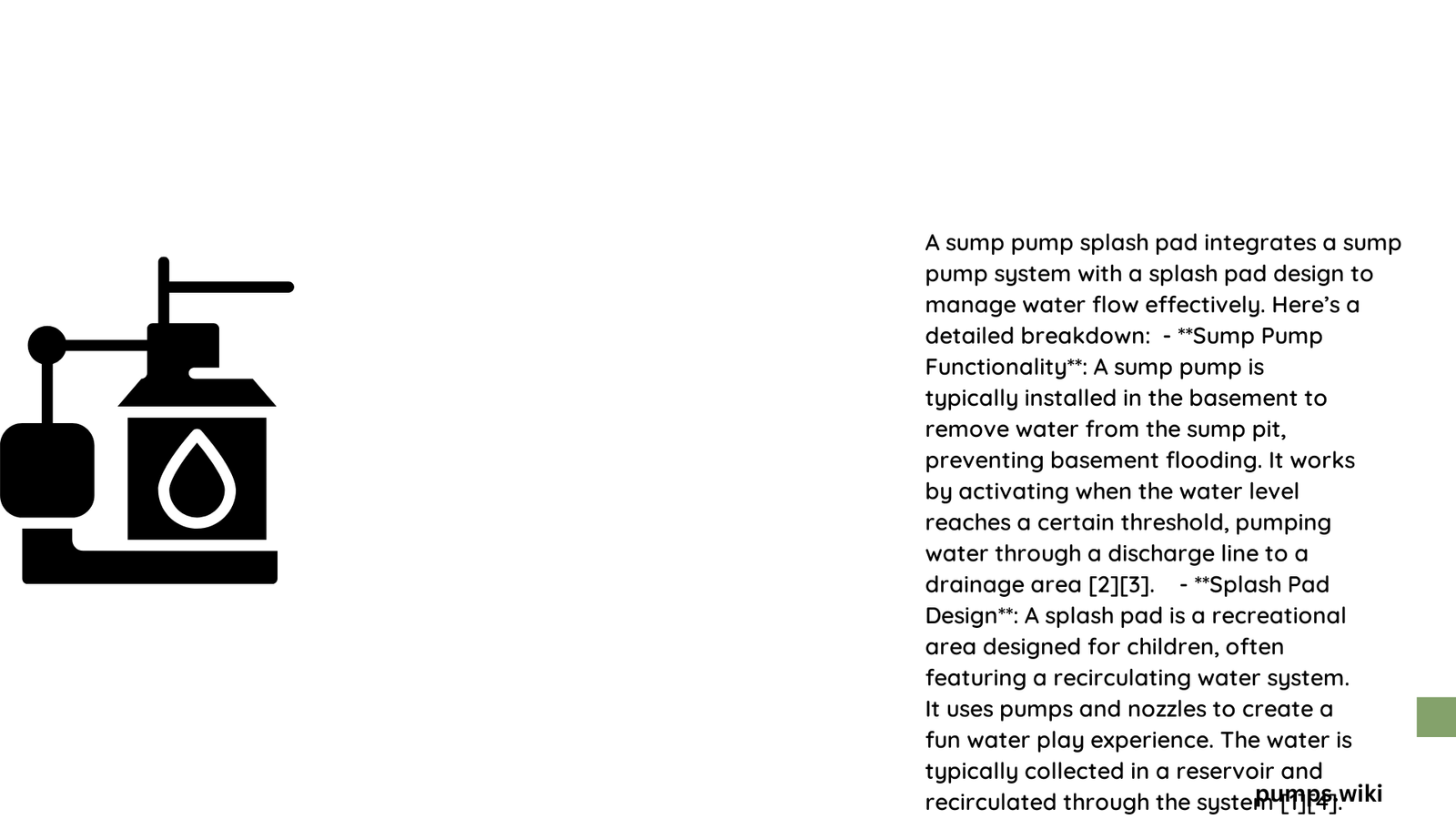A sump pump splash pad is a critical drainage solution that prevents water erosion and redirects excess groundwater away from your home’s foundation. By strategically managing water discharge from your sump pump, homeowners can protect their property’s structural integrity, prevent soil erosion, and maintain a dry, safe basement environment. This comprehensive guide will walk you through every aspect of sump pump splash pad implementation.
What Is a Sump Pump Splash Pad?
A sump pump splash pad is a specialized surface designed to receive and disperse water discharged from a sump pump’s drainage pipe. Its primary function is to prevent soil erosion, manage water flow, and protect your home’s foundation from potential water damage.
Why Do You Need a Sump Pump Splash Pad?

Water Management Benefits
- Prevents soil erosion around foundation
- Reduces potential water damage risks
- Directs water away from building structure
- Minimizes landscape disruption
How to Select the Right Sump Pump Splash Pad?
Material Considerations
| Material | Durability | Cost | Water Absorption |
|---|---|---|---|
| Concrete | High | Medium | Low |
| Plastic | Medium | Low | Very Low |
| Rubber | Medium | High | Medium |
What Are the Installation Requirements?
Key Dimensional Specifications
- Pit Dimensions: 18-30 inches diameter
- Depth: Minimum 30 inches
- Discharge Pipe: 1½ inches diameter
- Termination Height: Maximum 12 inches above splash pad
How to Install a Sump Pump Splash Pad?
Step-by-Step Installation Process
- Site Selection
- Choose basement corner with optimal drainage
- Ensure accessibility
-
Verify structural integrity
-
Pit Preparation
- Mark basin outline
- Cut concrete carefully
- Excavate designated area
-
Add gravel base (6-12 inches)
-
Basin and Pump Placement
- Wrap basin in filter fabric
- Position pump on stable surface
- Connect discharge pipe
- Ensure proper slope
What Maintenance Practices Ensure Longevity?
Recommended Maintenance Checklist
- Inspect every 3-6 months
- Clean sump pit quarterly
- Check discharge pipe for blockages
- Verify float switch functionality
- Test backup power systems
What Common Challenges Should You Anticipate?
Potential Installation Issues
- Improper slope
- Inadequate drainage
- Pipe blockages
- Insufficient splash pad size
Expert Tips for Optimal Performance
Professional Recommendations
- Use schedule 40 PVC pipes
- Implement slight downward pipe angle
- Consider local building code requirements
- Install backup power system
- Use high-quality filter fabric
What Are the Cost Considerations?
Estimated Investment Range
- Basic Splash Pad: $50-$200
- Professional Installation: $300-$1,000
- Complex Systems: $1,000-$3,000
Conclusion
A well-designed sump pump splash pad is an essential investment in protecting your home’s foundation and managing water drainage effectively. By understanding installation requirements, maintenance practices, and potential challenges, homeowners can create a robust water management system.
